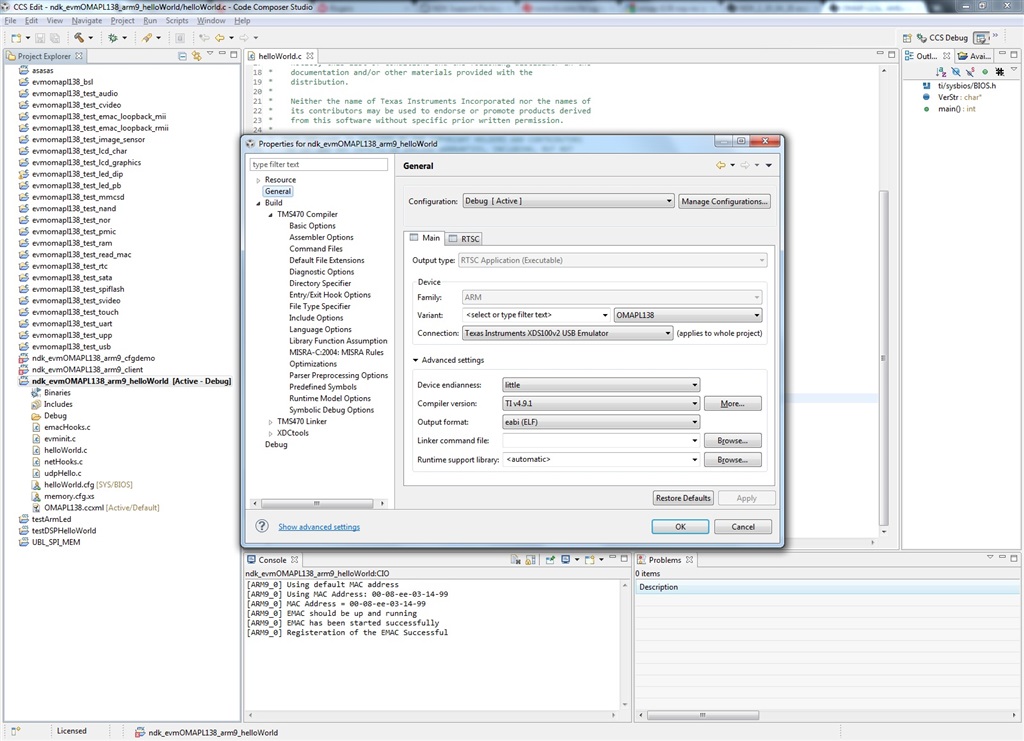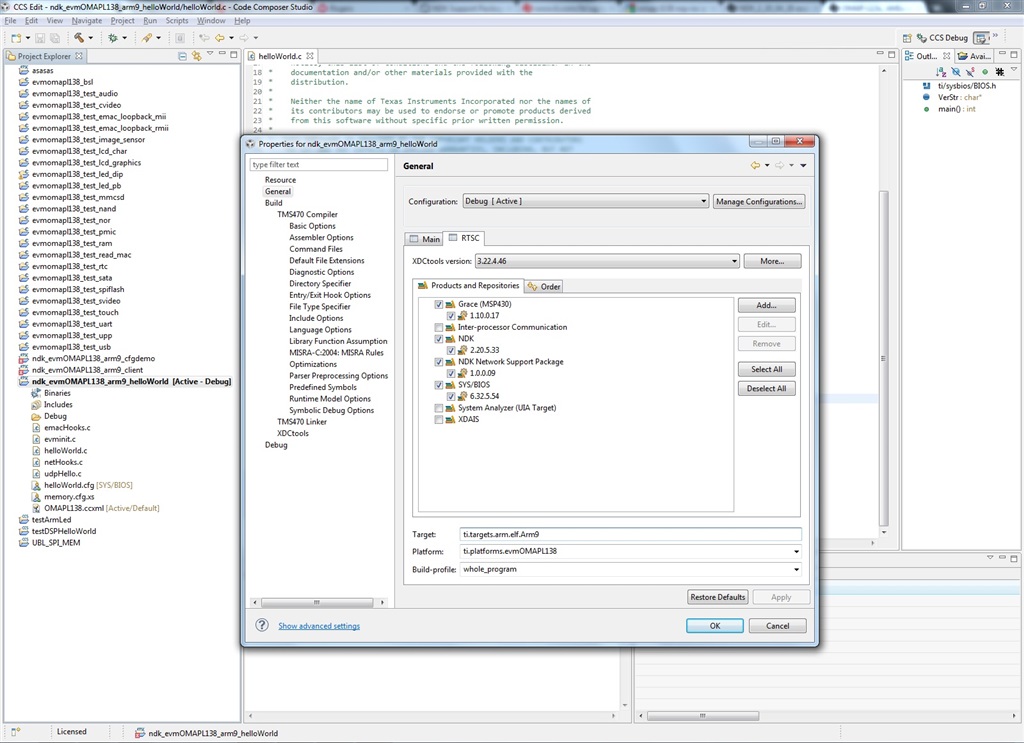Hi,
I'm using the following:
- CCSv5.1.0.09
- OMAP-L138 EVM (Logic PD) (OMAP SOM connected on the baseboard, no utility board)
- Lastest GEL files (given to me by Alan from the BIOS forum)
- XDS100v2
- NDK 2.20.05.33
- NSP 1.00.00.09
I imported the ARM projects into CCS. I had to change the NSP, NDK and BIOS versions of the projects to use the latest I installed. I also had to change the RTSC target. Now, my projects compile. There are 3 problems:
- After a power-up, everytime I try to debug a NDK project, the launching hangs and I have to cancel. After that, I can launch a debug session. I've opened a thread in the BIOS forum, but still wanted to mention it here just in case people have solutions.
http://e2e.ti.com/support/embedded/bios/f/355/t/154290.aspx#559038
- I tried to run both the HelloWorld and the Client examples and the output looks like this:
[ARM9_0] Using default MAC address
[ARM9_0] Using MAC Address: 00-08-ee-03-14-99
[ARM9_0] MAC Address = 00-08-ee-03-14-99
[ARM9_0] EMAC should be up and running
[ARM9_0] EMAC has been started successfully
[ARM9_0] Registeration of the EMAC Successful
It never goes more far than this. There seems to be a problem, since I don't get any IP address or DHCP feedback at all and according to the doc, I should. I also checked on the server DHCP list and the board is not present in the leased addresses.
Also, from time to time, it hangs even before this:
[ARM9_0] Using default MAC address
[ARM9_0] Using MAC Address: 00-08-ee-03-14-99
[ARM9_0] MAC Address = 00-08-ee-03-14-99
My ethernet cable is connected to a switch. Both LEDs are ON on the connector, no flashing at all.
Any idea please???
Best regards,
DT



